Kayleigh Haywood: How murdered schoolgirl was groomed online
- Published

Kayleigh Haywood first met Luke Harlow after he contacted her through Facebook
A man has been jailed for raping, murdering and falsely imprisoning schoolgirl Kayleigh Haywood. His friend has been jailed for grooming, sexually abusing and falsely imprisoning her. But how did the 15-year-old come into contact with the pair? What happened before she was raped and killed?
Stephen Beadman, 29, had already pleaded guilty to the rape and murder of Kayleigh, while Luke Harlow, 28, admitted grooming and engaging in sexual activity with her.
It was Harlow who contacted Kayleigh via Facebook. He wrote: "Hey, how are you?" to which she replied: "Fine - who are you?"
The court heard that within 10 minutes the pair had swapped mobile phone numbers and went on to exchange 2,600 messages - mainly by text.
About two weeks after that first contact Kayleigh's body was found in a hedgerow on the outskirts of Ibstock, Leicestershire.
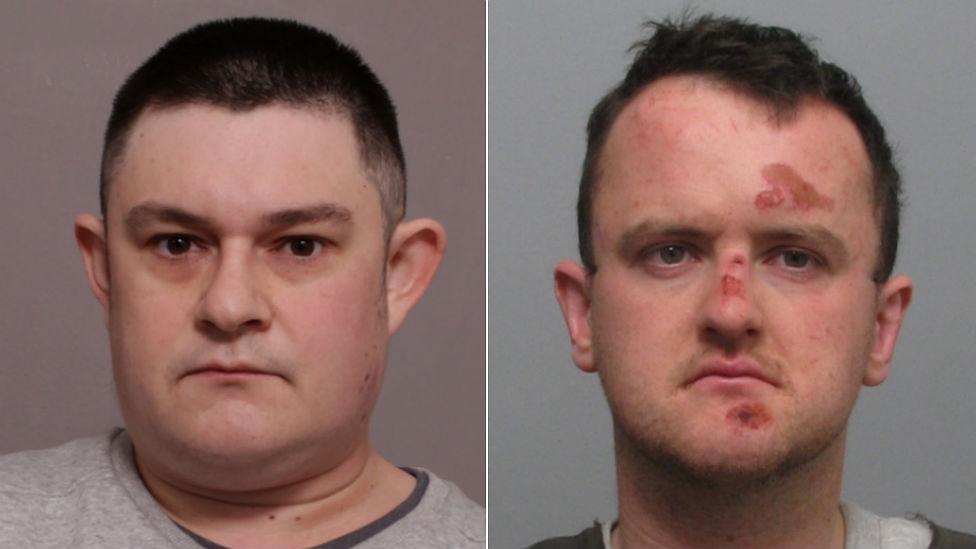
Luke Harlow (left) pleaded guilty to sexual activity with a child while Stephen Beadman admitted rape and murder
Harlow, an unemployed former media studies student, said in his police interview on 17 November that he was unsure how they came to be in contact with each other.
He claimed he had a habit of "accepting anyone" on Facebook and had about 2,000 friends.
"Basically, as soon as we were friends we just started talking," he said.
Those chats led to Kayleigh staying at his flat in George Avenue on Friday 13 November. She had earlier been dropped off at Ibstock Community College by her father who believed she was staying with a friend.
In a series of messages, Harlow called her his "princess" and said of their planned meeting: "Let's just keep it secret."
Leicestershire Police have made a film warning of the dangers of online grooming
Dr Belinda Winder, who is from Nottingham Trent University and works with sex offenders at HMP Whatton, said this was a classic grooming strategy.
She said: "[If you get] get the person isolated, you don't get comments from other people, you don't get anyone stopping you or commenting on what you're saying, but also it makes the person feel very special.
"This is a special private relationship away from the eyes of the rest of the world."
However, Kayleigh was not the first teenager he had tried to groom. He pleaded guilty to attempting to meet two other 15-year-old girls for sexual purposes and had contact with a 13-year-old too.
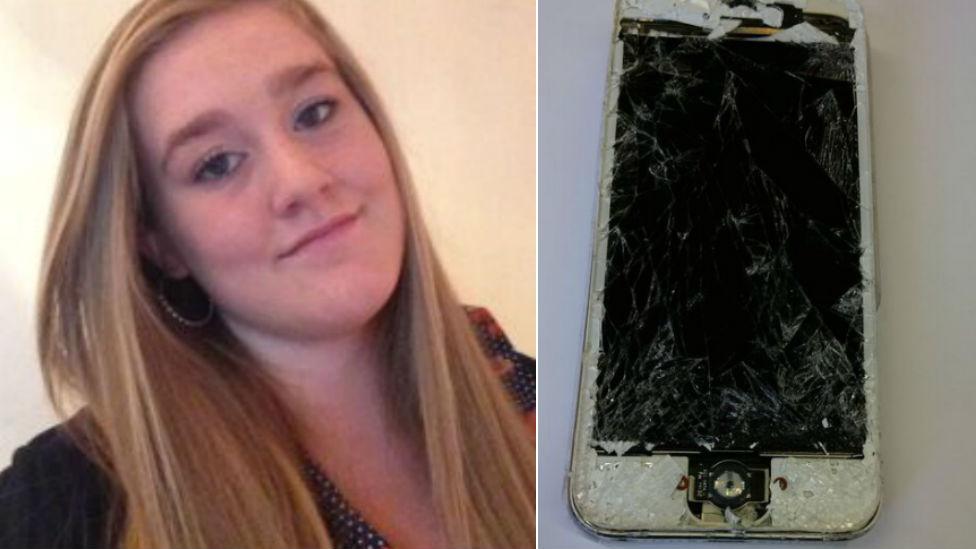
Kayleigh Haywood's mobile phone was found in the Sence Valley Forest Park area
During his trial the prosecution read a series of social media messages sent by Harlow to a girl he had befriended online when she was aged 15.
Among the messages was one saying: "I wish I could kidnap you for Christmas but I would probably be arrested and sent to prison."
During that Friday evening, after Harlow and Kayleigh first met, she was given "substantial amounts of alcohol" and "sexually touched" by him, according to the prosecution.

Kayleigh Haywood disappearance timeline
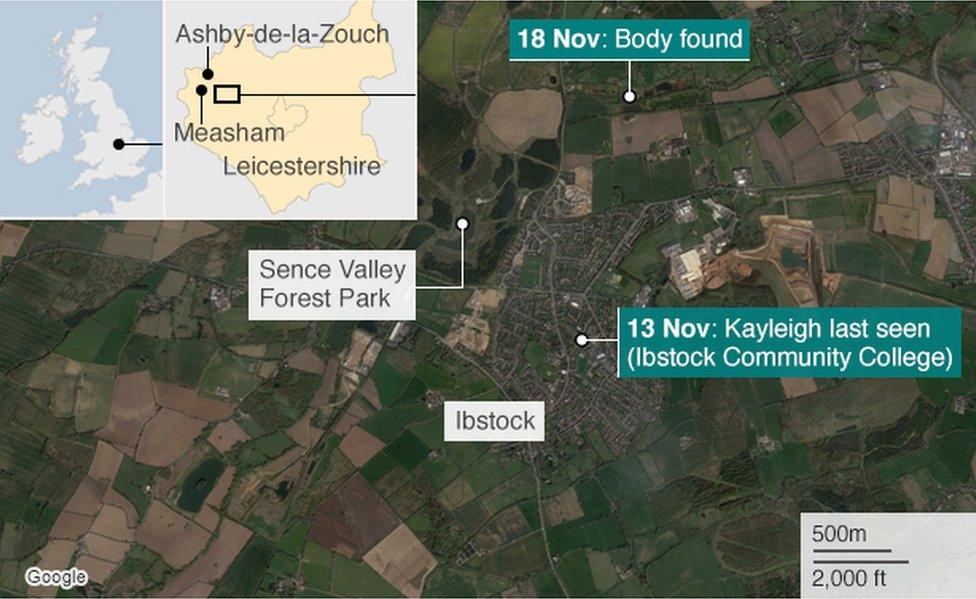
Kayleigh Haywood, from Measham in Leicestershire, was found dead on 18 November 2015
Friday 13 November - Kayleigh is dropped off by her family outside Ibstock Community College to spend an evening with friends
Saturday 14 November - Kayleigh contacts her family in the morning
Sunday 15 November - The teenager is reported missing by her family
Monday 16 November - Luke Harlow and Stephen Beadman are arrested in connection with Kayleigh's disappearance
Tuesday 17 November - Kayleigh's phone is found by a member of the public
Wednesday 18 November - Body is found in a field north of Ibstock at about 22:00 GMT
Thursday 19 November - Police say the body is Kayleigh's and is removed from undergrowth
Friday 20 November - Beadman is charged with her murder and Harlow is charged with grooming and two counts of sexual activity

The teenager made contact with her parents on Saturday morning but this was the last time she was heard from.
Neighbour Stephen Beadman said he arrived at the flat that evening after being told by Harlow he had a "bird" there.
Beadman told detectives he met Kayleigh at about 19:30 GMT but said she was drunk and he "couldn't get any conversation out of her".
The two men were found guilty of keeping Kayleigh prisoner between 21:00 GMT on 14 November and 03:00 on 15 November but what happened during that period is unclear.
During the trial Beadman's barrister asked Harlow whether he had tried to rape the schoolgirl while she was asleep.
This, it was claimed, caused a "fierce argument" between the two men which awoke Kayleigh.
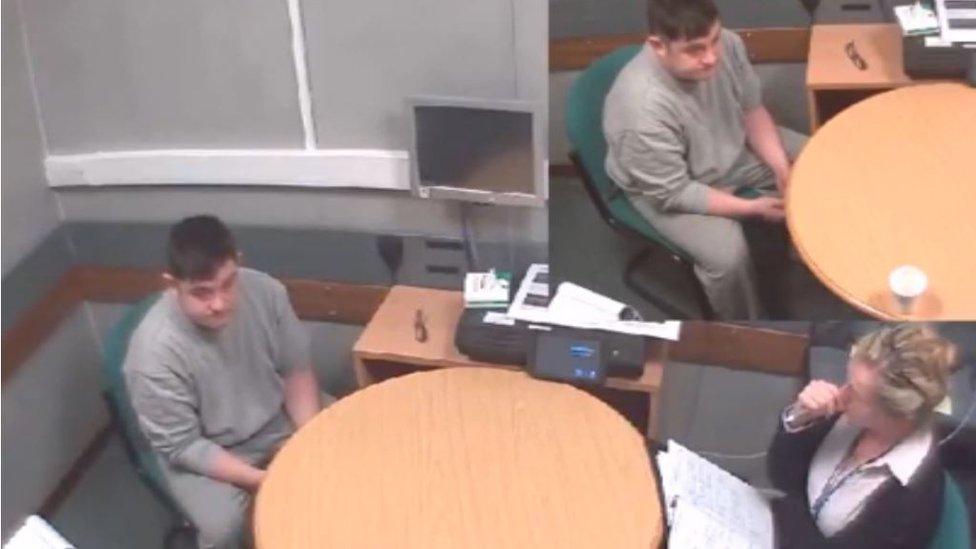
Luke Harlow (left and top right) said he was unsure how he became friends with Kayleigh
Harlow said this was "complete lies" and told the court he had actually been asleep.
However, in the early hours of Sunday morning Kayleigh - more than 24 hours after the teenager arrived at Harlow's flat - was seen fleeing from the property.
A neighbour said she was naked from the waist down and witnessed Beadman pinning her to the ground.
Beadman told detectives he could not remember what triggered the scene as they had all been drinking.
But days later, after denying knowing what had happened to her, Beadman confessed to first raping the teenager and then killing her with a brick.
During a police interview he said: "When I drink I just switch. But when I switch I get violent. I wasn't in full control because I had been drinking."
The case has raised issues over internet safety and it prompted Kayleigh's family to campaign for a new law to ban under-16s from opening social media accounts.
The local MP, Conservative Andrew Bridgen, who has been helping the family, said education surrounding the dangers of social media should begin at eight years old.
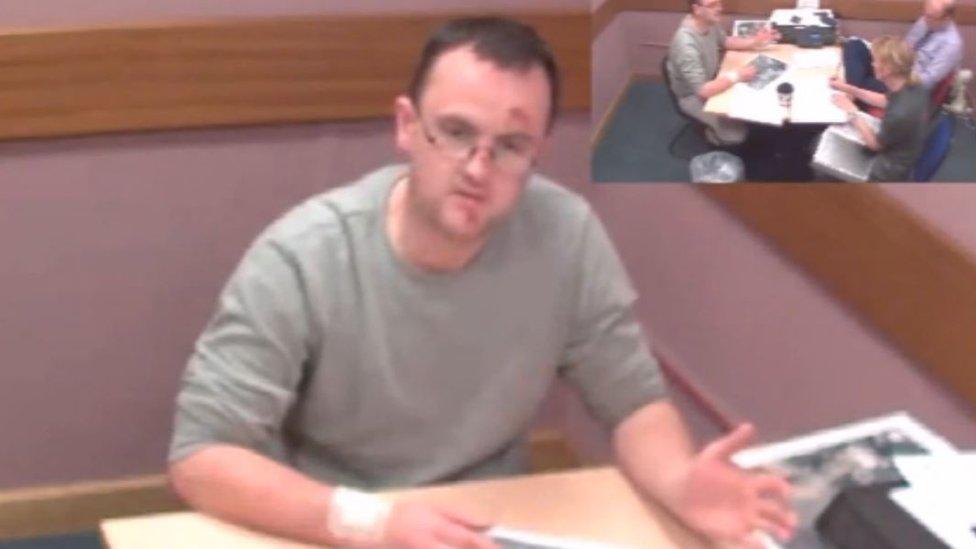
Stephen Beadman told police during an interview that Kayleigh was drunk when he first met her
"That will have to be monitored and it may have to come down further," he said.
Beadman had indecent images of underage girls on his computer, police said.
Det Supt Kate Meynell, from the East Midlands special operations unit, said: "There are people who have sinister reasons for being on [social media] and are prepared to exploit and target young people in order to gratify themselves."
The NSPCC said Kayleigh's death was "sad and tragic" and a "stark reminder about the dangers of social media as far as children are concerned".
A film portraying the last two weeks of the teenager's life is set to be shown in schools across Leicestershire and later in the rest of the UK.
Leicestershire Police, who made the five minute film, said it provided a warning about the dangers of online grooming.
- Published17 June 2016
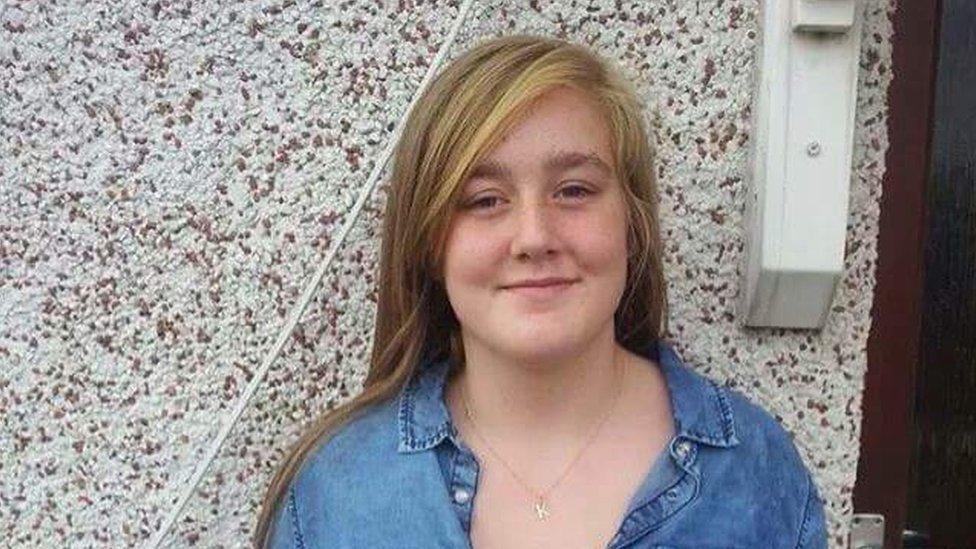
- Published16 June 2016

- Published13 June 2016

- Published5 April 2016

- Published10 June 2016

- Published9 June 2016
